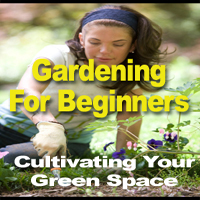


Embracing Self-Sufficiency And Sustainability

In an increasingly interconnected and technologically advanced world, the allure of off-grid living has captured the imaginations of countless individuals seeking an alternative lifestyle. The Off-Grid Living Movement represents a growing trend where people are choosing to live independently, reducing their reliance on traditional utilities, and embracing self-sufficiency and sustainability. This movement is gaining momentum as individuals seek to break free from the shackles of modern civilization, reduce environmental impact, and attain a greater sense of harmony with nature.
Key Principles Of The Off-Grid Living Movement:
Self-Sufficiency: At the heart of the off-grid living movement is the desire for self-sufficiency. Off-gridders aim to provide for their own basic needs, such as energy, water, and food, without relying on external infrastructure. They often employ renewable energy sources, such as solar panels and wind turbines, and use water collection and purification methods.
Sustainability: Sustainability is a cornerstone of off-grid living. This lifestyle emphasizes responsible and eco-conscious practices, from recycling and composting to sustainable agriculture and permaculture. Off-gridders typically seek to minimize their ecological footprint and reduce waste.
Resourcefulness: Off-grid living requires resourcefulness. Those who embrace this lifestyle must be creative and adaptive to overcome the challenges of living independently. They often build their homes using natural materials and repurpose everyday items to serve multiple purposes.
Connection With Nature: Off-grid living fosters a deep connection with the natural world. Many individuals who choose this lifestyle opt for remote locations, surrounded by the beauty of nature. They often forage for wild edibles, learn about local ecosystems, and live in harmony with the environment.
Minimalism: Minimalism is a common theme in off-grid living. By reducing the reliance on modern conveniences and material possessions, individuals often discover a simpler and more meaningful way of life.
Community: Contrary to the perception of complete isolation, many off-grid individuals form tight-knit communities where like-minded people come together to share knowledge, resources, and a sense of camaraderie. These communities enable collective development of sustainable practices.
Benefits Of The Off-Grid Living Movement:
Reduced Environmental Impact: Off-gridders significantly lower their environmental footprint. They use renewable energy sources, minimize waste, and employ sustainable agricultural methods, making their lifestyles more eco-friendly.
Self-Reliance: Living off-grid encourages self-reliance and the development of essential skills. Individuals learn how to provide for their basic needs and become less dependent on external systems.
Lower Operating Costs: Over time, off-grid living can lead to lower living costs, as it often involves reduced utility bills and minimal reliance on traditional infrastructure.
Connection To Nature: The off-grid living movement promotes a stronger connection to the natural world. People living in remote locations have the opportunity to appreciate the beauty of nature and become stewards of their environment.
Community Building: Off-grid communities foster strong bonds among residents. Sharing knowledge, resources, and common goals creates a sense of belonging and mutual support.
The Off-Grid Living Movement is a response to the complexities of modern life and the urgent need for environmental sustainability. It empowers individuals to take control of their lives, reduce their ecological impact, and forge a deeper connection with the natural world. While off-grid living may not be for everyone, it serves as a source of inspiration for those seeking a more self-sufficient and harmonious way of life. As this movement continues to grow, it offers a compelling alternative to the mainstream urban lifestyle and a vision of a more sustainable future.
Maximizing Comfort In Minimal Space
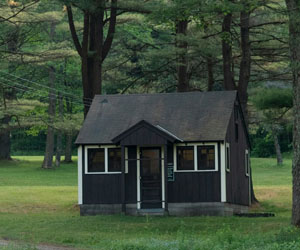 2. Multifunctional Furniture
2. Multifunctional Furniture
Tiny living demands furniture that pulls double duty. Invest in pieces that serve multiple functions, such as a sofa that can convert into a bed, a coffee table with storage, or a dining table that can fold away when not in use. These furniture items are crucial for maximizing space and utility.
3. Vertical Storage
Utilizing vertical space is key to organized tiny living. Install wall-mounted shelves, hooks, and pegs to keep items off the floor and create a sense of height. Vertical storage helps you keep your tiny home clutter-free while adding a touch of design flair.
4. Custom Storage Solutions
Tiny homes often require custom storage solutions. Consider hiring a professional or using DIY skills to create storage systems that fit your unique space. Custom cabinets, built-in shelving, and under-stair storage can make the most of every nook and cranny.
5. Clear Containers And Labels
Clear storage containers are your best friends in a tiny home. They allow you to see what's inside without having to open each container, making it easy to find what you need. Use labels to further organize your belongings, making your tiny space efficient and user-friendly.
6. Downsizing Your Wardrobe
In a tiny home, you'll need to downsize your wardrobe. Consider a capsule wardrobe with versatile, mix-and-match pieces. Rotate your clothing with the seasons to save space and keep your closet uncluttered.
7. Kitchen Efficiency
Tiny home kitchens require special attention. Invest in compact appliances, use wall-mounted storage for pots and pans, and opt for space-saving utensils and cookware. Staying organized in the kitchen is essential for making the most of your limited space.
8. Maximizing Natural Light
Natural light can make a tiny home feel more open and airy. Use light-filtering window treatments, strategically place mirrors to reflect light, and keep windows unobstructed to maximize the benefits of natural illumination.
Maximize Your Space And Minimize Clutter
 3. Under-Bed Storage
3. Under-Bed Storage
Your bed can be more than just a place to sleep. Consider using the space underneath for storage. Under-bed drawers or bins are excellent for storing clothing, shoes, and other items you don't use daily.
4. Compact Kitchen Appliances
In a small kitchen, compact appliances can save valuable counter and cabinet space. Look for smaller refrigerators, slim dishwashers, and mini appliances that fit your needs without dominating your kitchen.
5. Fold-Down Tables
Fold-down tables are perfect for small dining areas or home offices. They can be easily stowed away when not in use, creating more room for everyday activities.
6. Pegboards And Hooks
Pegboards and hooks can be a game-changer for organizing and storing items like kitchen utensils, tools, or office supplies. These space-saving solutions keep your essentials within arm's reach without cluttering up drawers or countertops.
7. Magnetic Strips
In the kitchen, magnetic strips mounted on the wall can hold knives and metal spice containers, saving counter and drawer space. They're not only functional but also add a unique design element to your kitchen.
8. Over-The-Door Storage
Maximize closet and bathroom space by adding over-the-door organizers. These handy storage solutions can hold shoes, accessories, cleaning supplies, and more, making efficient use of often underutilized space.
Gardening For Wildlife
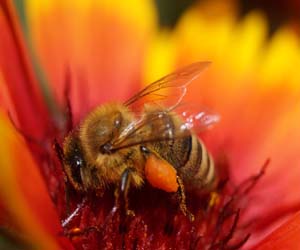 Pest Control: Many of the creatures you invite into your garden, such as birds and beneficial insects, are natural pest controllers. They help keep populations of garden-damaging insects in check.
Pest Control: Many of the creatures you invite into your garden, such as birds and beneficial insects, are natural pest controllers. They help keep populations of garden-damaging insects in check.
Pollinators: Gardens that attract pollinators like bees and butterflies ensure the successful pollination of plants, leading to bountiful harvests of fruits, vegetables, and flowers.
Education: Gardening for wildlife is an educational opportunity for children and adults alike. Observing the behavior and interactions of birds, insects, and other creatures fosters a deeper appreciation for nature.
Aesthetics: A garden designed for wildlife can be a beautiful and thriving oasis, filled with the sights and sounds of the natural world. It can be a serene and inviting place for human enjoyment.
Tips For Gardening For Wildlife:
Plant Native Species: Native plants provide food and habitat for local wildlife. Research which plants are native to your area and incorporate them into your garden.
Provide Water: Birds, insects, and other wildlife need water for drinking and bathing. Install a birdbath or a small pond to offer a water source.
Habitat Diversity: Create a variety of habitats in your garden, including meadows, woodlands, and wetland areas. Different creatures require different types of environments.
Shelter And Nesting Sites: Incorporate birdhouses, bat boxes, and bee hotels to provide shelter and nesting opportunities for various species.

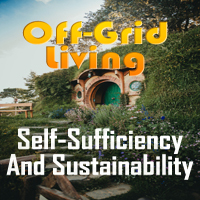



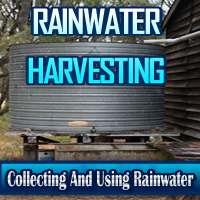
The Fruits Of Gardener's Labor
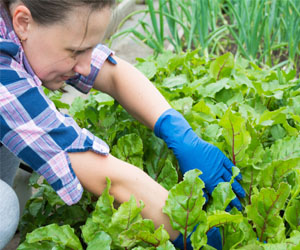 Connection To Nature
Connection To Nature
Gardening is a harmonious dance with nature. Abundant harvests illustrate the beautiful partnership between the gardener and the Earth. Tending to the soil, choosing the right seeds or saplings, watering, and protecting your plants from pests and disease — all these efforts are rewarded by the Earth's generous bounty. The cycles of life in your garden, from planting to harvesting, mirror the larger cycles of nature, and they remind us of our place in the natural world.
Self-Sufficiency And Sustainability
Abundant harvests also represent a move toward self-sufficiency and sustainability. Growing your own food not only reduces your reliance on commercial agriculture but also ensures that you have a fresh and healthy food source right at your doorstep. It empowers individuals and families to take control of their food supply and make environmentally conscious choices. When you produce your food, you reduce the carbon footprint associated with transportation and packaging.
Health And Nutrition
The fruits of abundant harvests are some of the healthiest foods you can consume. Homegrown produce is free from harmful chemicals and pesticides, offering unparalleled freshness and nutrition. These vegetables and fruits are picked at their peak ripeness, preserving their vitamins, minerals, and flavors. When you have an abundant harvest, you have an abundance of wholesome, nutrient-rich foods at your disposal.
A Healthier, Safer, And Greener Way To Clean
 Health Hazards: Many conventional cleaning products release volatile organic compounds (VOCs) into the air, contributing to indoor air pollution. Prolonged exposure to VOCs can lead to respiratory issues, allergies, and skin irritations.
Health Hazards: Many conventional cleaning products release volatile organic compounds (VOCs) into the air, contributing to indoor air pollution. Prolonged exposure to VOCs can lead to respiratory issues, allergies, and skin irritations.
Environmental Impact: Harsh cleaning chemicals are not eco-friendly. When washed down drains, they can contaminate water systems and harm aquatic life. The production and disposal of these chemicals also contribute to pollution and waste.
Chemical Residue: Residues from chemical cleaners can linger on surfaces, posing long-term health risks, especially in homes with children or pets.
Benefits Of Chemical-Free Cleaning
Healthier Indoor Air: Chemical-free cleaning means cleaner indoor air quality, reducing the risk of respiratory problems and allergies for you and your family.
Reduced Health Risks: Non-toxic cleaning products reduce the risk of skin irritations and other health problems associated with chemical exposure.
Environmentally Responsible: Chemical-free cleaning is gentle on the environment. It doesn't contribute to water pollution, and it reduces the production and disposal of harmful chemicals.
Safer For Children And Pets: Chemical-free cleaning eliminates the risk of harmful chemical residues on surfaces, making your home safer for kids and pets.
Methods Of Chemical-Free Cleaning
Vinegar And Water: A mixture of white vinegar and water can be used to clean glass, countertops, and even sanitize surfaces.
Baking Soda: Baking soda is an excellent abrasive cleaner. It can be used to scrub surfaces, deodorize, and even extinguish small fires.
Lemon Juice: Lemon juice can cut through grease and grime. It also leaves behind a fresh, citrus scent.
Essential Oils: Many essential oils, such as tea tree oil, lavender oil, and eucalyptus oil, have natural cleaning and disinfecting properties.